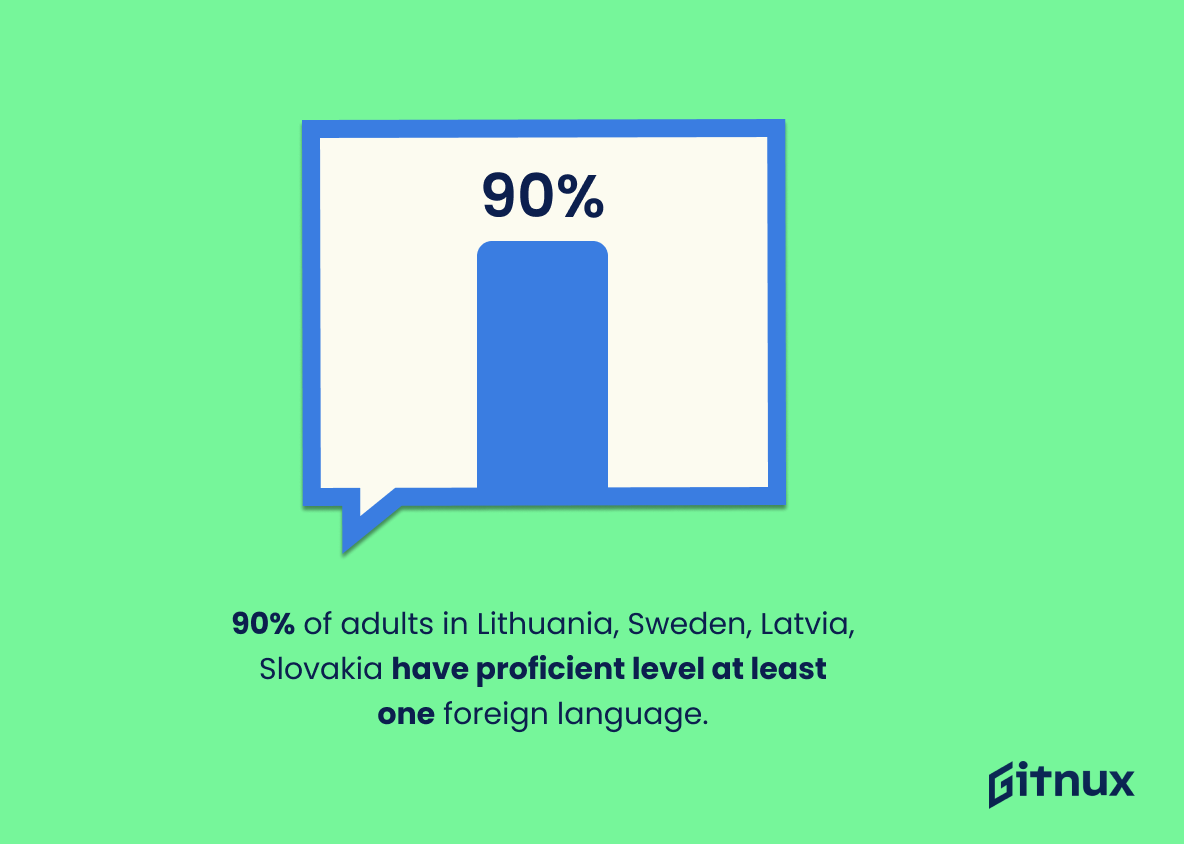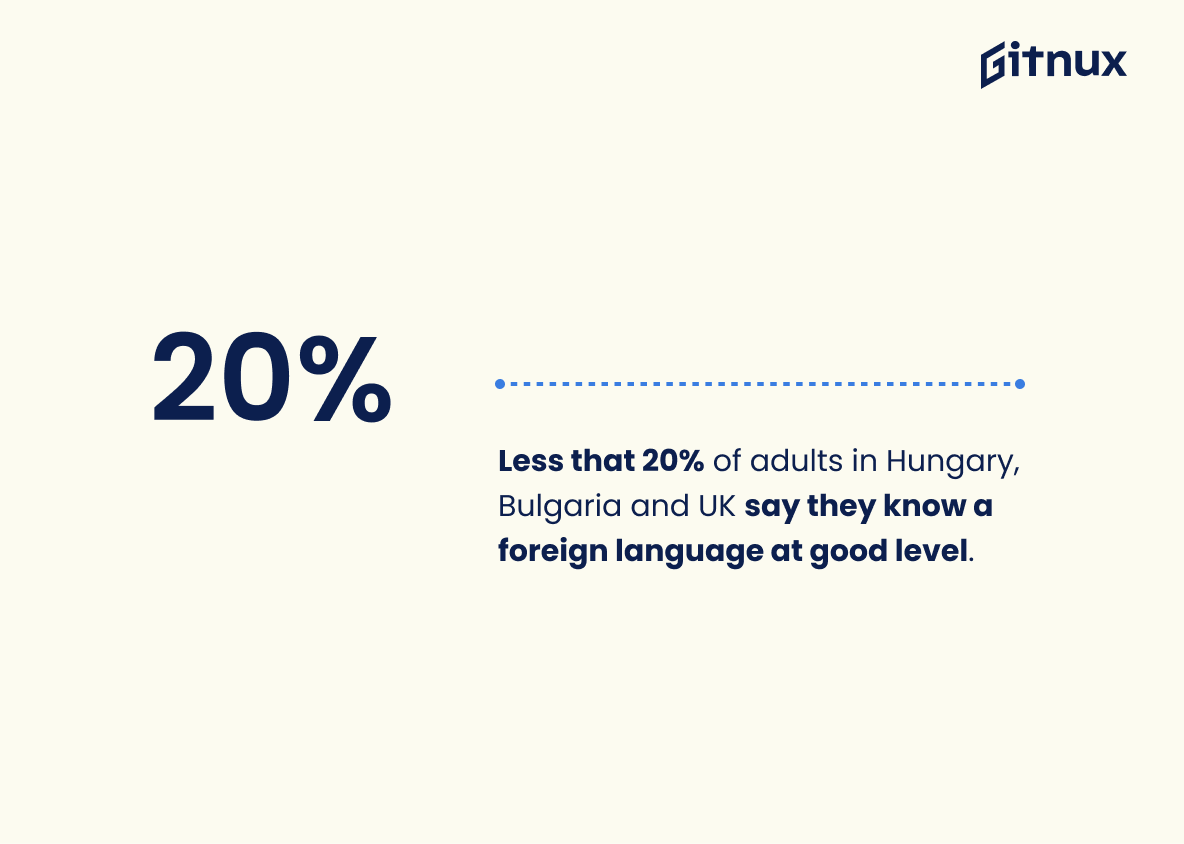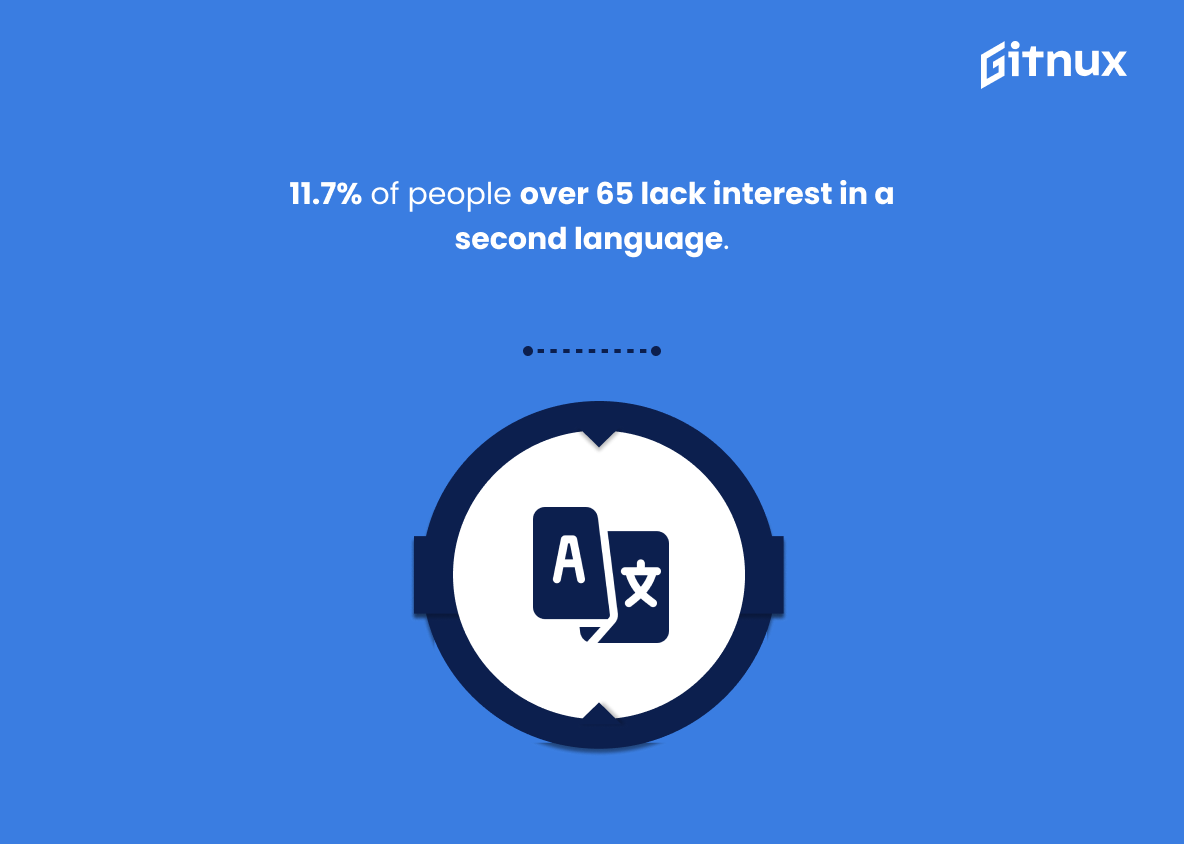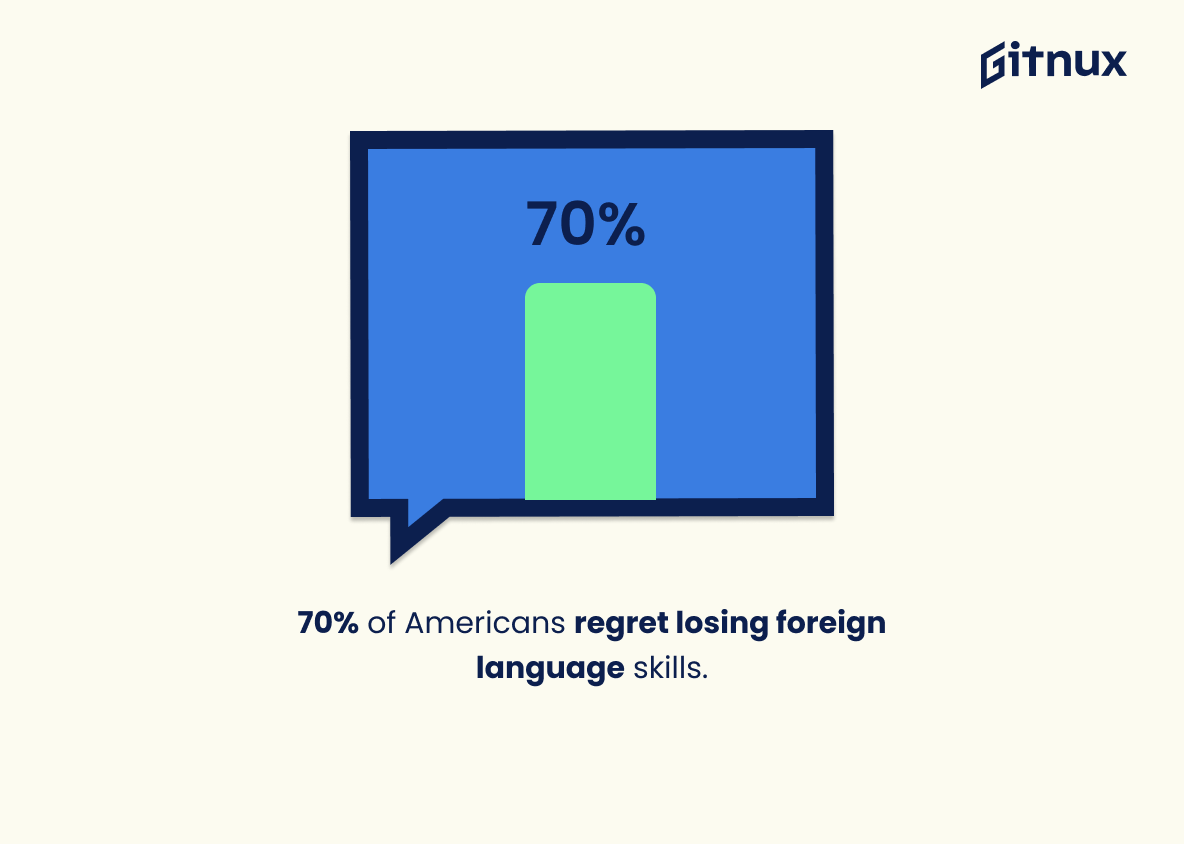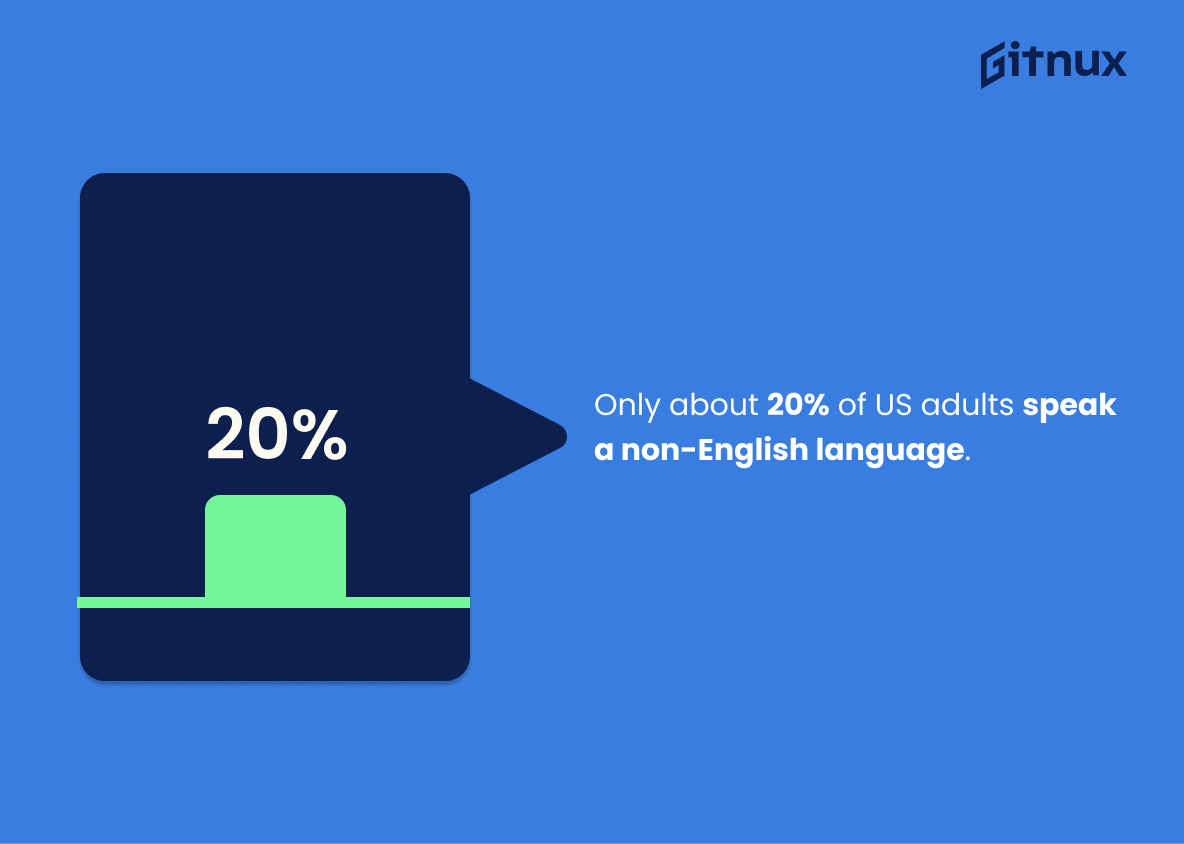In today’s globalized world, having a working knowledge of foreign languages is becoming increasingly important. With the rise of international travel, business, and communication, having the ability to communicate in multiple languages is an invaluable asset.
But just how many people are taking advantage of this opportunity? In this blog post, we’ll take a look at the latest foreign language skills statistics and explore what they mean for the future.
Foreign Language Skills: The Most Important Statistics
Native English speakers find Arabic, Cantonese, Mandarin, Japanese, and Korean exceptionally difficult to learn.
1.5 billion people worldwide spoke English in 2022, compared to 1.1 billion Mandarin Chinese speakers.
Foreign Language Skills: Statistics Overview
Sweden has the highest foreign language proficiency according to statistics.
Sweden is leading the way in foreign language proficiency, setting a high standard for other countries to strive for. This can be used as a benchmark for other countries to measure their own foreign language proficiency.
63% of EU adults know at least one foreign language, but only 31% know it well.
This statistic highlights the importance of language proficiency in the EU. It shows that although a majority of EU adults are familiar with a foreign language, only a small fraction are able to use it effectively. This suggests that there is a need for more language learning opportunities and resources in the EU.
British employers most frequently seek French speakers for language skills, followed by German and Spanish.
This provides insight into the language skills that are in demand by businesses in the UK. Knowing which languages are in demand can help jobseekers determine which language skills they should focus on developing in order to increase their chances of finding employment.
English is expected to remain a common second language in the foreseeable future, which has advantages.
This highlights the importance of English as a language and its continued relevance in the future. This could influence decisions related to language learning and the allocation of resources for language education.
Native English speakers find Arabic, Cantonese, Mandarin, Japanese, and Korean exceptionally difficult to learn.
This shows which languages are the most challenging for native English speakers to learn. This information can be used to inform decisions about which languages to prioritize when teaching foreign language skills.
1.5 billion people worldwide spoke English in 2022, compared to 1.1 billion Mandarin Chinese speakers.
English is prevalent as a language in comparison to other languages. It demonstrates the importance of the English language for international communication, which is why many people choose to learn it as a second language.
Knowledge of a foreign language is widespread in Lithuania, Sweden, Latvia and Slovakia. In these countries, more than 90% of adults know at least one foreign language and more than two-thirds of them know it at a good or proficient level.
This statistic reflects the high level of foreign language proficiency that exists in these countries, which can have a significant impact on economic and social development. Knowing a foreign language can be a valuable asset for individuals, businesses, and society as a whole, as it can open up new opportunities for employment, education, travel, and cultural exchange. Knowing a foreign language can also help to bridge cultural and language barriers, allowing people to communicate more effectively and develop deeper connections with each other.
In Hungary, Bulgaria, and the United Kingdom, less than 20% of adults say they know a foreign language at a good or proficient level.
This information helps to illustrate the importance of foreign language knowledge in today’s increasingly interconnected world. Knowing a foreign language can open up a variety of opportunities, from travel and study to employment and business opportunities. It can also help to foster cultural understanding, as well as communication and collaboration between different countries. As such, this statistic is an important reminder that more needs to be done to promote foreign language learning and use.
Young adults are more comfortable with languages. Compared to the EU average of 63%, the knowledge of at least one foreign language rises to 74% for people aged 25 to 34 years and drops to 47% for those between 55 and 64 years.
Young adults are more likely to be able to communicate with people from other cultures, which can lead to increased understanding and positive international relations. It also shows that language is something that needs to be taught and encouraged throughout life, not just in childhood. As more people are able to communicate in multiple languages, it will create a more connected world.
11.7% of older people over 65 years old can’t speak a second language and have no interest in learning one.
There is a large segment of the population who may be missing out on the many benefits that come with learning a second language, such as increased job opportunities, access to a wider range of cultural experiences, and improved cognitive functioning. This statistic highlights the need to ensure that older people have access to language learning opportunities, as well as the need to consider the role of language in fostering intergenerational understanding.
Around two-thirds of Americans cannot speak a second language. Nearly 40% of Americans don’t care about learning a second language.
There is a lack of interest or commitment to learning a second language among Americans. This is problematic because bilingualism is beneficial in many aspects of life, including employment, education, and communication. In an increasingly globalized world, the ability to understand and interact with people of different nationalities is essential for personal and professional success. Therefore, this statistic is a reminder of the importance of learning a second language and the need to encourage more Americans to do so.
When looking at the Google search results for 2022, over 840,000 searches have been made about learning Spanish, which is more than any other language.
Spanish is a highly sought-after language to learn. There is strong demand for Spanish language learning resources, and it has become a globally relevant language. This information also suggests that those looking to engage in international work or travel may benefit from learning Spanish, which could open up new opportunities for them.
Of those who didn’t learn a second language, 70% of Americans regret letting their foreign language skills slip.
A large portion of Americans recognizes the benefits of being bilingual and regret not taking the opportunity to learn a second language. Learning a second language can open up a wide range of opportunities, such as better job prospects, increased mental flexibility, and improved communication skills. It can also help people to better understand and appreciate different cultures.
21% of people have missed a career opportunity because they didn’t know a second language.
Knowing second language can be important in order to advance in one’s career. It can open many doors to job opportunities and allow individuals to have access to a wider range of career prospects. This statistic emphasizes the need to invest in language learning in order to make the most of these opportunities.
Read more about Best Career Advice
Supplementary Statistics
Only about 20% of US adults can speak a language other than English.
It highlights the need for more Americans to become proficient in a language other than English, as only a small fraction of the population is currently able to do so. This is especially relevant in a blog post about foreign language skills statistics, as it serves to emphasize the importance of learning a second language.
54% of Europeans are able to speak more than one language.
Furthermore, it demonstrates the commitment of Europeans to learning and mastering new languages, which can open up a variety of opportunities for them in terms of travel, work, and education.
People who are bilingual earn an average of 2% more than monolingual individuals.
This is an important point to make in a blog post about foreign language skills statistics, as it can encourage readers to invest in learning a second language and reap the rewards.
About 100 million Chinese people are currently studying English as a foreign language.
With such a large number of Chinese people studying English, it is clear that the ability to communicate in a foreign language is becoming increasingly valuable. This statistic highlights the need for people to develop their foreign language skills in order to stay competitive in the global market.
62% of UK residents cannot speak a second language.
It highlights the need for more people to learn a second language, as it could open up a world of opportunities for them. It also serves as a warning that the UK is falling behind other countries in terms of language proficiency, which could have a negative impact on the economy and international relations.
Over 50% of the world’s population is bilingual or multilingual.
With over half of the world’s population speaking more than one language, it is clear that having the ability to communicate in multiple languages is becoming increasingly necessary. This statistic highlights the need for individuals to develop their foreign language skills in order to stay competitive in the global market.
The number of foreign language enrollments in US colleges fell 9.2% between 2013-2016.
This highlights the need for more initiatives to promote the importance of foreign language skills and to encourage more students to pursue language studies.
72% of people believe being fluent in a second language is an impressive characteristic.
It demonstrates that the majority of people recognize the importance of being able to communicate in a second language, and that it is seen as an impressive trait. This information can be used to emphasize the importance of learning a foreign language, and to encourage readers to pursue language learning.
In 2019, 66% of Australian job postings preferred candidates with foreign language skills.
This shows that employers are increasingly looking for candidates with the ability to communicate in multiple languages, and that having foreign language skills can give job seekers a competitive edge. This is an important point to consider when discussing foreign language skills statistics, as it highlights the value of these skills in the current job market.
In 2021, 43% of US high school students were enrolled in a foreign language course.
It shows that a large portion of US high school students recognize the value of learning a foreign language and are taking steps to acquire the skills necessary to succeed in a globalized world. This statistic is a powerful reminder of the need for foreign language proficiency in today’s society.
75.5% of the population in the European Union is bilingual.
This highlights the prevalence of bilingualism in the region, demonstrating the value placed on the ability to communicate in multiple languages. This is especially pertinent in a blog post about foreign language skills statistics, as it serves to emphasize the importance of such skills in the EU.
About 65% of people in Canada speak a second language.
A large majority of Canadians have the ability to communicate in more than one language, which is a valuable asset in today’s increasingly globalized world. Furthermore, it highlights the need for Canadians to continue to develop their foreign language skills in order to remain competitive in the global market.
Roughly 41% of the world’s population speaks at least one of 10 languages as their mother tongue.
With over two billion people speaking one of the ten most common languages, it is clear that having the ability to communicate in multiple languages is essential for connecting with people from different cultures and backgrounds. Furthermore, having a working knowledge of foreign languages can open up a variety of career opportunities, as well as provide a better understanding of the world around us.
In Africa, there are over 2,140 languages spoken due to extraordinary linguistic diversity.
The extraordinary linguistic diversity in Africa is a testament to the importance of foreign language skills. With over 2,140 languages spoken, it is clear that the ability to communicate in multiple languages is essential for connecting with people from different backgrounds and cultures.
13% of the US population speaks Spanish at home, making it the most popular foreign language in the US.
A significant portion of the population speaks a language other than English, and that foreign language skills are becoming increasingly valuable in the US. This statistic is especially relevant for those looking to gain an edge in the job market, as employers are increasingly looking for candidates with foreign language skills.
In 2019, the number of people taking the Japanese-Language Proficiency Test increased by 2.2% compared to the previous year.
In 2017, around 92% of primary school children in the EU were learning a foreign language.
The majority of primary school children are being given the opportunity to learn a foreign language, which is essential for their future success. It also highlights the commitment of the EU to promote language learning and cultural exchange.
Conclusion
In conclusion, foreign language skills are becoming increasingly important in today’s world. With the global economy and the increasing number of international business opportunities, having a good understanding of a foreign language can be a great asset.
It can open up a range of new opportunities and help you stand out from the crowd. The statistics show that the demand for foreign language skills is growing and that more and more people are taking the time to learn a foreign language. So, if you’re looking to give yourself an edge in the job market, investing in foreign language skills is definitely a good idea.
References
Ling: “Language Learning Statistics 2022: The Most Learned Second Language”, cited March 2023. (Source)
Preply: “Foreign Language Education Statistics: 70% of Americans regret letting their foreign language skills slip”, cited March 2023. (Source)
Eurostat: “Foreign language skills statistics”, cited March 2023. (Source)
CEDEFOP: “How many adults actually speak a foreign language?”, cited March 2023. (Source)
Statista: “The top languages demanded by British employers”, cited March 2023. (Source)
IZA: “The value of language skills”, cited March 2023. (Source)
Statista: “The Most Difficult Languages To Learn For English Speakers”, cited March 2023. (Source)
Open Culture: “A Map Showing How Much Time It Takes to Learn Foreign Languages: From Easiest to Hardest”, cited March 2023. (Source)
Statista: “The World’s Most Spoken Languages”, cited March 2023. (Source)
Statista: “The most spoken languages worldwide in 2022”, cited March 2023. (Source)
Statista: “English Is the Internet’s Universal Language”, cited March 2023. (Source)
Statista: “The Most Common Languages on Wikipedia”, cited March 2023. (Source)






